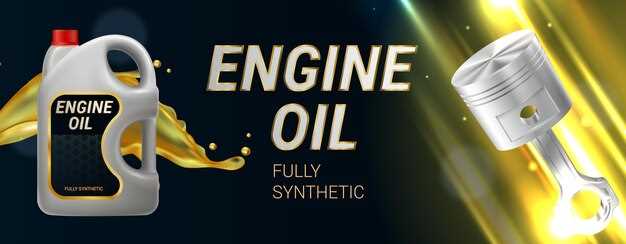
In the high-octane world of GT racing, selecting the right lubricants is crucial for ensuring optimal performance and longevity of the engine and its components. The specific demands of racing environments require lubricants that not only reduce friction but also provide exceptional thermal stability under varying temp conditions. Understanding the characteristics of different lubricants will enable teams to make informed choices that enhance their vehicle’s efficiency on the track.
Racing lubricants come in a range of formulations, including synthetic and mineral-based options. Each type offers unique advantages concerning temperature resistance, viscosity, and overall performance. For instance, synthetic lubricants often perform better at elevated temp levels, making them a preferred choice for competitive racing. Choosing the wrong lubricant can result in inadequate protection, leading to engine wear and the potential for catastrophic failure during a race.
Moreover, factors such as engine design, driving style, and track conditions should influence lubricant selection. A comprehensive understanding of how these variables interact with lubricant properties will empower teams to optimize engine performance. By prioritizing the appropriate lubricants specifically engineered for racing applications, teams can maximize their chances of success on the track while safeguarding their investment in high-performance GT cars.
Understanding High-Temperature Performance Requirements

In the demanding environment of GT racing, lubricants must perform optimally under high-temperature conditions. These temperatures can significantly exceed normal operating ranges due to the intense heat generated from engine friction, component wear, and the thermal effects of braking systems. Therefore, selecting the right lubricant is crucial for maintaining engine integrity and performance.
High-temperature performance requirements for lubricants primarily focus on their ability to maintain viscosity, provide adequate lubrication, and resist breakdown. As temperatures rise, the viscosity of a lubricant can decrease, potentially leading to insufficient oil film thickness and increased wear. Consequently, it is essential to choose lubricants engineered to retain their viscosity properties even at elevated temp levels.
Furthermore, lubricants must exhibit thermal stability to prevent degradation and the formation of sludge under extreme conditions. Decomposed oils can lead to harmful deposits that impede engine performance. Additives such as anti-oxidants and viscosity index improvers play a critical role in enhancing lubricant durability at high temperatures, ensuring that they can withstand the rigors of competitive racing.
Another factor to consider is the lubricant’s flash point, which indicates the temperature at which it can ignite. A higher flash point signifies better thermal resistance, reducing the risk of fires in high-stress environments. Additionally, lubricant formulations should include anti-wear agents to minimize friction and prolong engine life, especially during short-duration racing events where thermal spikes are common.
In conclusion, understanding and addressing high-temperature performance requirements is vital for selecting the right lubricants for GT cars. By ensuring that lubricants can withstand elevated temperatures while maintaining their lubricating properties, teams can optimize engine performance and reliability during races.
Selecting the Right Viscosity for Optimal Engine Protection
Selecting the appropriate viscosity of lubricants is crucial for ensuring optimal engine protection in GT racing cars. Viscosity, the measure of a fluid’s resistance to flow, directly impacts how well the lubricant performs under high temperatures and pressures experienced during races.
A high viscosity oil provides a thicker film between engine components, which can enhance protection against wear and tear. However, it’s important to balance this with the need for adequate flow, particularly during startup and in extreme conditions. A lubricant that is too thick can lead to increased friction, reduced fuel efficiency, and higher operating temperatures.
On the other hand, low viscosity lubricants tend to flow more easily, reducing engine drag and improving fuel economy. However, they may not offer sufficient protection under high-stress situations typical in GT racing. It is essential to consult manufacturer recommendations and racing guidelines to determine the ideal viscosity grade for specific engine designs and racing conditions.
Utilizing multi-viscosity oils can provide a practical solution, offering the benefits of both high and low viscosity lubricants. These oils adapt to temperature variations, maintaining protective qualities while ensuring smooth operation throughout the race. Ultimately, the right viscosity selection will safeguard engine components, ensure peak performance, and enhance the longevity of GT racing vehicles.
Evaluating Synthetic vs. Mineral-Based Lubricants for GT Racing
When choosing racing lubricants for GT cars, the distinction between synthetic and mineral-based lubricants is critical for performance and longevity. Each type offers unique characteristics that influence engine efficiency and protection under extreme conditions.
1. Synthetic Lubricants

Synthetic lubricants are engineered to provide superior performance in racing environments. The benefits include:
- Higher Temperature Stability: Synthetic oils maintain their viscosity better at elevated temperatures, reducing the risk of breakdown during intense racing.
- Enhanced Engine Cleanliness: These lubricants minimize deposits and sludge formation, ensuring a cleaner engine and prolonged life.
- Improved Oxidation Resistance: Synthetic oils resist oxidation, significantly increasing the oil’s lifespan, especially under demanding conditions.
- Lower Friction: They typically offer reduced friction, which translates into better performance and fuel efficiency.
2. Mineral-Based Lubricants
Mineral-based lubricants, derived from refining crude oil, have their own set of advantages:
- Cost-Effectiveness: Mineral oils are generally less expensive than synthetic options, making them more attractive for budget-conscious racers.
- Widely Available: These lubricants are accessible and typically come in various formulations catering to different performance needs.
- Suitable for Traditional Engines: Some older engines perform better with mineral oils due to their specific design and tolerances.
3. Key Considerations for GT Racing
When evaluating lubricants for GT racing, consider the following:
- Engine Type: Match the lubricant to the engine design. Some engines may benefit from the properties of synthetic oils, while others may not.
- Temperature Range: Choose lubricants that can withstand the operating temperatures your GT car will encounter during races.
- Performance Requirements: Assess specific racing conditions such as track type, average lap times, and race duration.
- Manufacturer Recommendations: Always refer to the manufacturer’s guidelines for optimal lubricant selection.
In conclusion, both synthetic and mineral-based lubricants have their place in the world of GT racing. Careful evaluation of their properties and alignment with specific racing needs will ensure optimal performance and reliability on the track.













